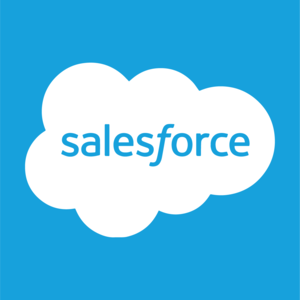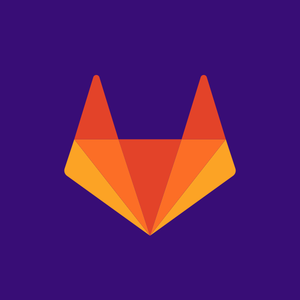
Atlassian (TEAM)
Atlassian catches our eye. Its stellar unit economics and efficient sales strategy tee it up for immense long-term profits.― StockStory Analyst Team
1. News
2. Summary
Why Atlassian Is Interesting
Started by two Australian university friends who funded their startup with credit cards, Atlassian (NASDAQ:TEAM) provides software tools that help teams plan, track, collaborate, and share knowledge across organizations.
- Software is difficult to replicate at scale and leads to a stellar gross margin of 83.5%
- User-friendly software enables clients to ramp up spending quickly, leading to the speedy recovery of customer acquisition costs
- On the flip side, its static operating margin over the last year shows it couldn’t become more efficient


Atlassian has the potential to be a high-quality business. If you believe in the company, the valuation seems fair.
Why Is Now The Time To Buy Atlassian?
High Quality
Investable
Underperform
Why Is Now The Time To Buy Atlassian?
Atlassian is trading at $155.45 per share, or 6.1x forward price-to-sales. Atlassian’s valuation is lower than that of many in the software space. Even so, we think it is justified for the revenue growth characteristics.
Now could be a good time to invest if you believe in the story.
3. Atlassian (TEAM) Research Report: Q3 CY2025 Update
Collaboration software company Atlassian (NASDAQ:TEAM) announced better-than-expected revenue in Q3 CY2025, with sales up 20.6% year on year to $1.43 billion. On the other hand, the company’s full-year revenue guidance of $1.54 billion at the midpoint came in 75.1% below analysts’ estimates. Its non-GAAP profit of $1.04 per share was 24.1% above analysts’ consensus estimates.
Atlassian (TEAM) Q3 CY2025 Highlights:
- Revenue: $1.43 billion vs analyst estimates of $1.40 billion (20.6% year-on-year growth, 2.2% beat)
- Adjusted EPS: $1.04 vs analyst estimates of $0.84 (24.1% beat)
- Adjusted Operating Income: $322.7 million vs analyst estimates of $288.9 million (22.5% margin, 11.7% beat)
- Operating Margin: -6.7%, down from -2.7% in the same quarter last year
- Free Cash Flow Margin: 8%, down from 26% in the previous quarter
- Billings: $1.23 billion at quarter end, up 13.5% year on year
- Market Capitalization: $41.93 billion
Company Overview
Started by two Australian university friends who funded their startup with credit cards, Atlassian (NASDAQ:TEAM) provides software tools that help teams plan, track, collaborate, and share knowledge across organizations.
Atlassian's product suite includes Jira for project management and issue tracking, Confluence for document collaboration and knowledge sharing, Jira Service Management for IT service desk functionality, and Loom for asynchronous video communication. These tools collectively form what Atlassian calls its "System of Work"—a connected ecosystem built on a common technology platform that enables teams to work together effectively.
The company serves organizations of all sizes, from small teams to large enterprises, with over 80% of Fortune 500 companies using its products. Atlassian employs a distinctive go-to-market strategy that differs from traditional enterprise software companies. Rather than relying heavily on a commissioned sales force to acquire new customers, Atlassian emphasizes product-led growth with transparent pricing, self-service purchases, and word-of-mouth marketing. This approach has helped it build a global customer base across 200 countries.
Beyond its core products, Atlassian maintains the Atlassian Marketplace, an online store where third-party developers offer thousands of apps and integrations that extend the functionality of Atlassian's products. The company has also invested in AI capabilities through Atlassian Intelligence, which is embedded across its premium cloud products to enhance productivity and collaboration.
4. Project Management Software
The future of work requires teams to collaborate across departments and remote offices. Project management software is both driving this change and benefiting from it. While the trend of collaborative work management has been strong for a while, the Covid pandemic has definitively accelerated the demand for tools that allow work to be done remotely.
Atlassian faces competition from large technology companies like Microsoft (with GitHub and Teams), IBM, and Google, as well as specialized players such as GitLab, ServiceNow, Asana, Monday.com, and Notion in various segments of team collaboration and project management software.
5. Revenue Growth
Examining a company’s long-term performance can provide clues about its quality. Any business can put up a good quarter or two, but the best consistently grow over the long haul. Thankfully, Atlassian’s 26.1% annualized revenue growth over the last five years was solid. Its growth beat the average software company and shows its offerings resonate with customers, a helpful starting point for our analysis.
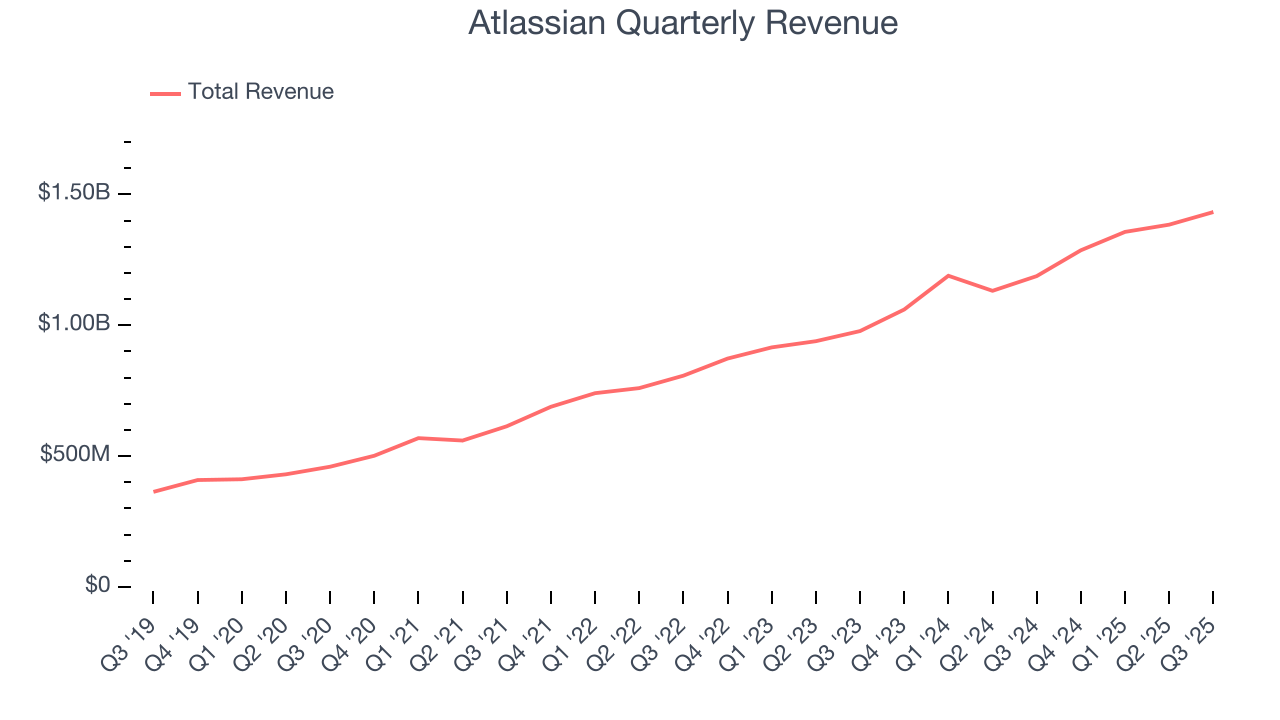
Long-term growth is the most important, but within software, a half-decade historical view may miss new innovations or demand cycles. Atlassian’s annualized revenue growth of 21.4% over the last two years is below its five-year trend, but we still think the results suggest healthy demand. 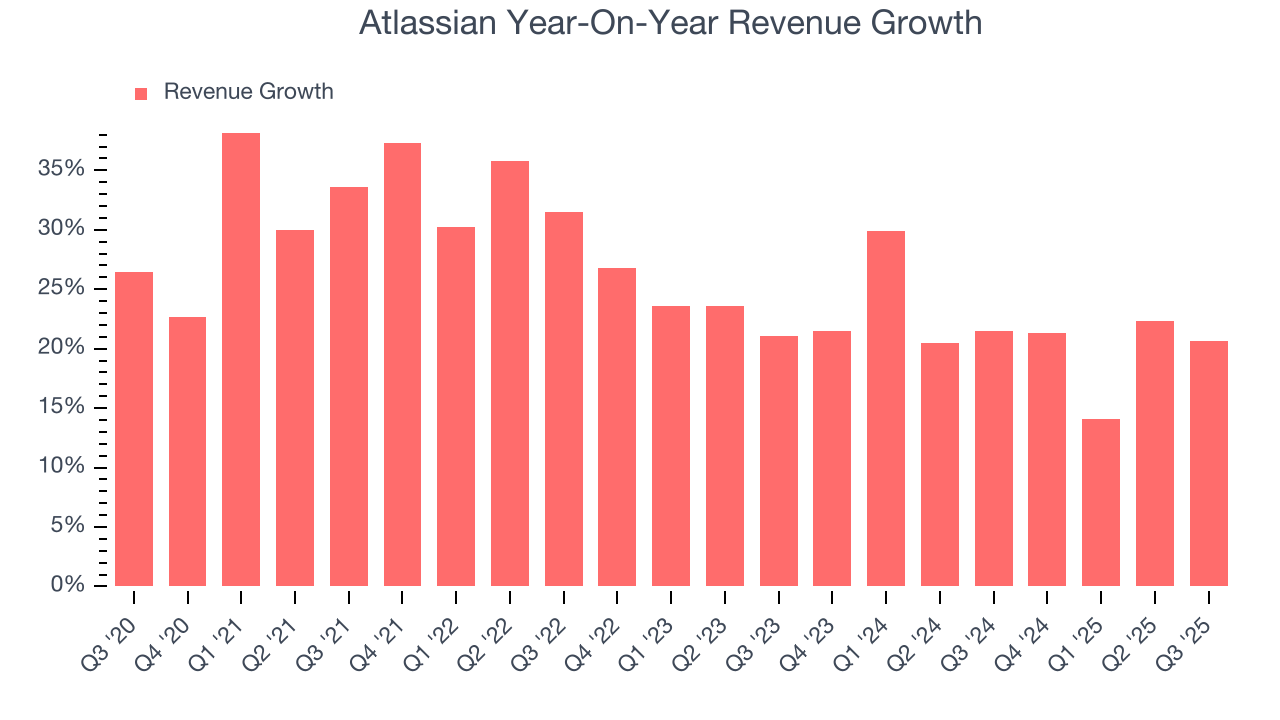
This quarter, Atlassian reported robust year-on-year revenue growth of 20.6%, and its $1.43 billion of revenue topped Wall Street estimates by 2.2%.
Looking ahead, sell-side analysts expect revenue to grow 17.9% over the next 12 months, a deceleration versus the last two years. Despite the slowdown, this projection is admirable and suggests the market is forecasting success for its products and services.
6. Billings
Billings is a non-GAAP metric that is often called “cash revenue” because it shows how much money the company has collected from customers in a certain period. This is different from revenue, which must be recognized in pieces over the length of a contract.
Atlassian’s billings came in at $1.23 billion in Q3, and over the last four quarters, its growth slightly lagged the sector as it averaged 13.3% year-on-year increases. This alternate topline metric grew slower than total sales, meaning the company recognizes revenue faster than it collects cash - a headwind for its liquidity that could also signal a slowdown in future revenue growth. 
7. Customer Acquisition Efficiency
The customer acquisition cost (CAC) payback period represents the months required to recover the cost of acquiring a new customer. Essentially, it’s the break-even point for sales and marketing investments. A shorter CAC payback period is ideal, as it implies better returns on investment and business scalability.
Atlassian is extremely efficient at acquiring new customers, and its CAC payback period checked in at 21.4 months this quarter. The company’s rapid recovery of its customer acquisition costs means it can attempt to spur growth by increasing its sales and marketing investments.
8. Gross Margin & Pricing Power
Software is eating the world. It’s one of our favorite business models because once you develop the product, it usually doesn’t cost much to provide it as an ongoing service. These minimal costs can include servers, licenses, and certain personnel.
Atlassian’s gross margin is one of the highest in the software sector, an output of its asset-lite business model and strong pricing power. It also enables the company to fund large investments in new products and sales during periods of rapid growth to achieve outsized profits at scale. As you can see below, it averaged an elite 82.9% gross margin over the last year. That means Atlassian only paid its providers $17.13 for every $100 in revenue.
The market not only cares about gross margin levels but also how they change over time because expansion creates firepower for profitability and free cash generation. Atlassian has seen gross margins improve by 0.8 percentage points over the last 2 year, which is slightly better than average for software.
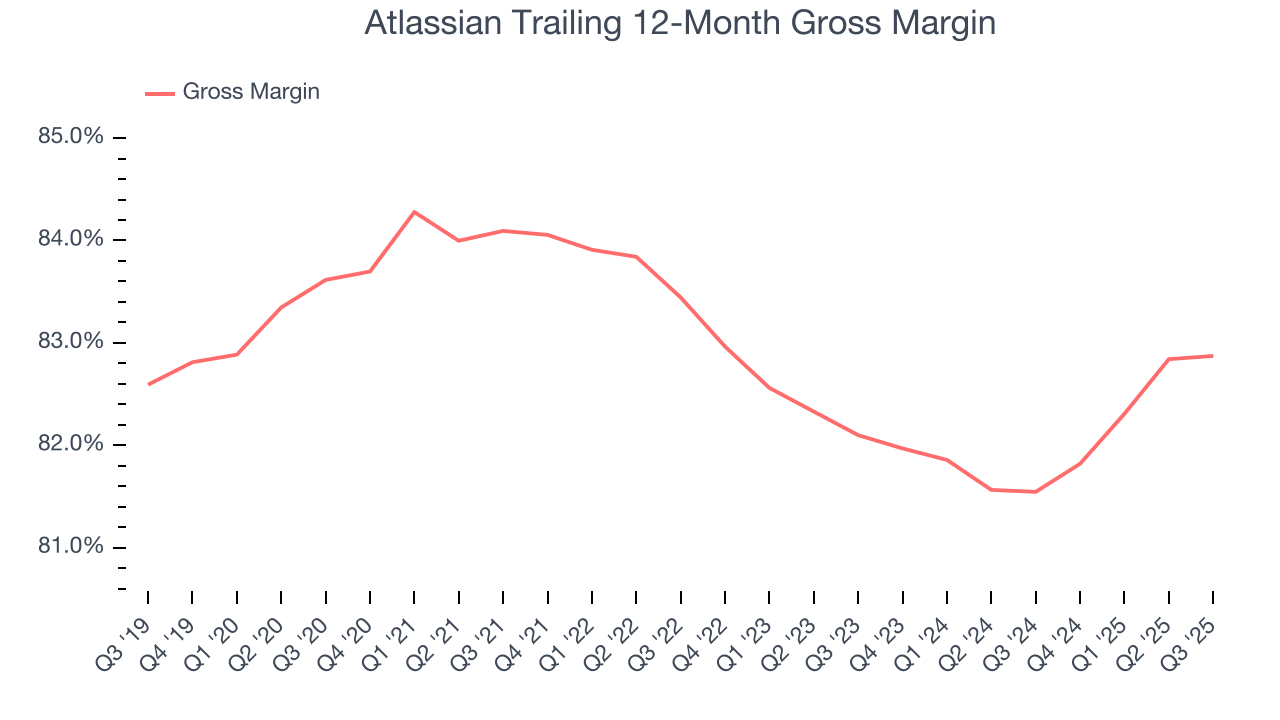
In Q3, Atlassian produced a 82% gross profit margin, in line with the same quarter last year. Zooming out, Atlassian’s full-year margin has been trending up over the past 12 months, increasing by 1.3 percentage points. If this move continues, it could suggest better unit economics due to more leverage from its growing sales on the fixed portion of its cost of goods sold (such as servers).
9. Operating Margin
Atlassian’s expensive cost structure has contributed to an average operating margin of negative 3.6% over the last year. This happened because the company spent loads of money to capture market share. As seen in its fast revenue growth, the aggressive strategy has paid off so far, and Wall Street’s estimates suggest the party will continue. We tend to agree and believe the business has a good chance of reaching profitability upon scale.
Looking at the trend in its profitability, Atlassian’s operating margin might fluctuated slightly but has generally stayed the same over the last two years. This raises questions about the company’s expense base because its revenue growth should have given it leverage on its fixed costs, resulting in better economies of scale and profitability.
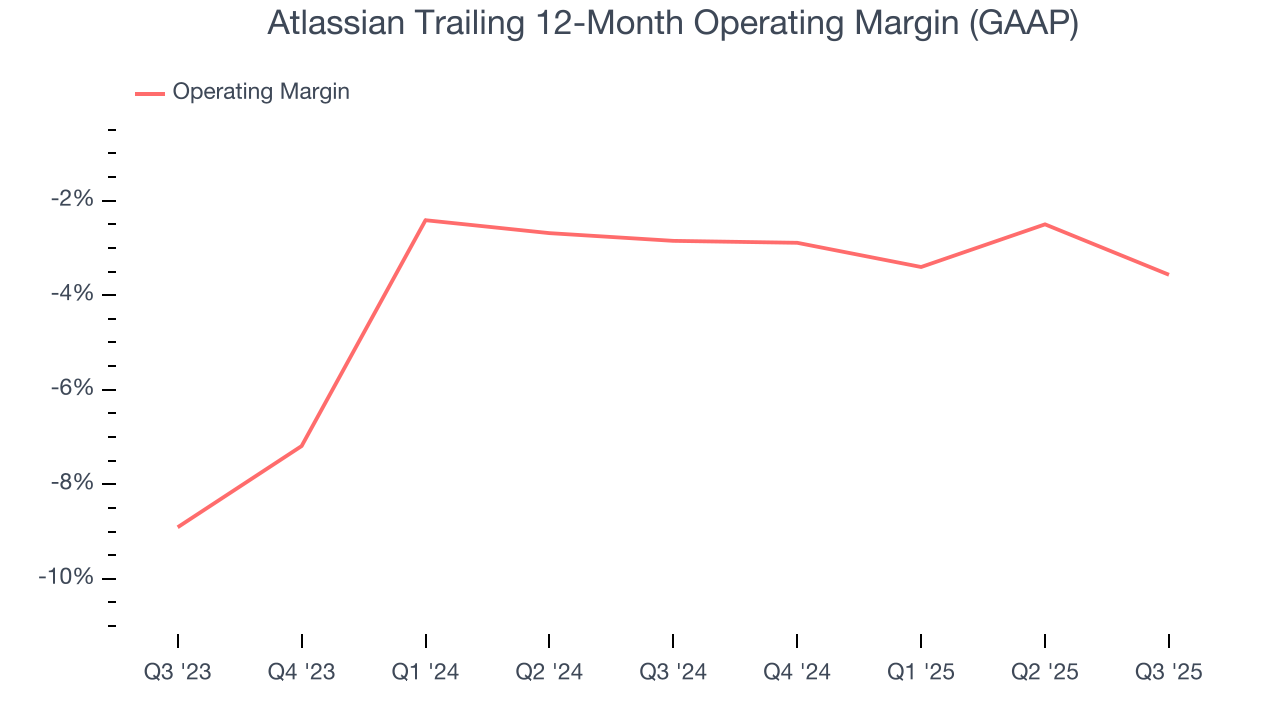
Atlassian’s operating margin was negative 6.7% this quarter.
10. Cash Is King
Free cash flow isn't a prominently featured metric in company financials and earnings releases, but we think it's telling because it accounts for all operating and capital expenses, making it tough to manipulate. Cash is king.
Atlassian has shown robust cash profitability, driven by its attractive business model and cost-effective customer acquisition strategy that enable it to invest in new products and services rather than sales and marketing. The company’s free cash flow margin averaged 26.7% over the last year, quite impressive for a software business. The divergence from its underwhelming operating margin stems from the add-back of non-cash charges like depreciation and stock-based compensation. GAAP operating profit expenses these line items, but free cash flow does not.
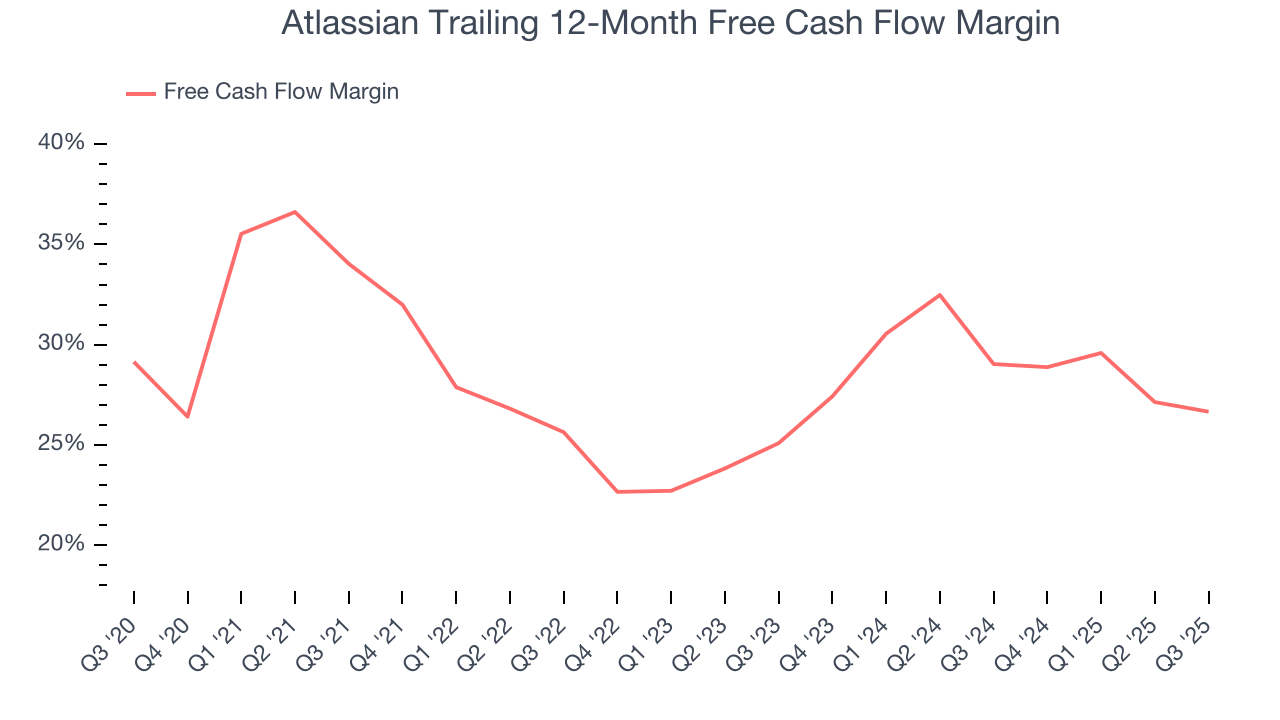
Atlassian’s free cash flow clocked in at $114.6 million in Q3, equivalent to a 8% margin. This result was good as its margin was 1.7 percentage points higher than in the same quarter last year, but we note it was lower than its one-year cash profitability. Nevertheless, we wouldn’t read too much into a single quarter because investment needs can be seasonal, causing short-term swings. Long-term trends are more important.
Over the next year, analysts predict Atlassian’s cash conversion will slightly improve. Their consensus estimates imply its free cash flow margin of 26.7% for the last 12 months will increase to 28.2%, it options for capital deployment (investments, share buybacks, etc.).
11. Balance Sheet Assessment
Companies with more cash than debt have lower bankruptcy risk.
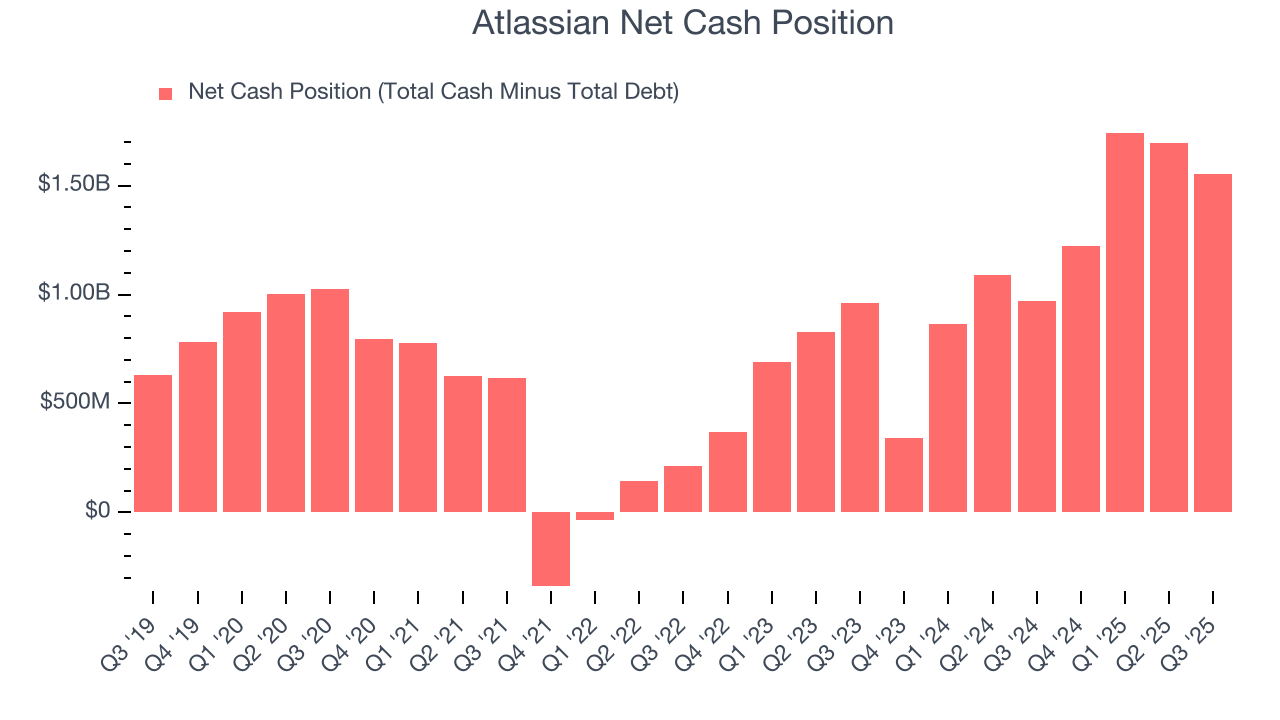
Atlassian is a well-capitalized company with $2.78 billion of cash and $1.23 billion of debt on its balance sheet. This $1.55 billion net cash position is 3.5% of its market cap and gives it the freedom to borrow money, return capital to shareholders, or invest in growth initiatives. Leverage is not an issue here.
12. Key Takeaways from Atlassian’s Q3 Results
It was encouraging to see Atlassian beat analysts’ revenue and adjusted operating profit expectations this quarter. Overall, this was a solid quarter. The stock traded up 5.7% to $170 immediately after reporting.
13. Is Now The Time To Buy Atlassian?
Updated: December 4, 2025 at 9:19 PM EST
Before making an investment decision, investors should account for Atlassian’s business fundamentals and valuation in addition to what happened in the latest quarter.
We think Atlassian is a good business. First off, its revenue growth was strong over the last five years. And while its operating margin hasn't moved over the last year, its admirable gross margin indicates excellent unit economics. On top of that, its efficient sales strategy allows it to target and onboard new users at scale.
Atlassian’s price-to-sales ratio based on the next 12 months is 6.3x. Looking at the software space right now, Atlassian trades at a compelling valuation. For those confident in the business and its management team, this is a good time to invest.
Wall Street analysts have a consensus one-year price target of $245.24 on the company (compared to the current share price of $156.64), implying they see 56.6% upside in buying Atlassian in the short term.





